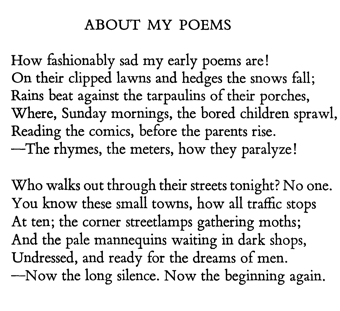In constructing a position for one’s own side, one must always debunk a caricature of the opposition. That seems to be an iron law of political rhetoric. Thus I don’t take it too seriously or complain too strongly when Yuval Levin argues that the “progressive view of government has long involved the effort to shrink and clear the space between the individual and the state.”
In a Weekly Standard article, Levin asserts that both the Democrats and the Republicans in the 2012 campaign recognized only the state and individuals. Both missed the value of “religious congregations, civic associations, fraternal groups, and charities, especially in providing help to the poor.” The Democrats, in particular, “fail[ed] to grasp” the value of civil society.
Although that may be an accurate portrait of some liberal political theorists (see my critique of Martha Nussbaum), it is manifestly not true of President Obama (a former member of the Saguaro Seminar: Civic Engagement in America and a theorist of community action), nor is it a fair description of the administration’s policies, which tend to favor independent local groups, from local health centers and charter schools to service programs like City Year and YouthBuild. Obama adopted the position that Levin recommends, about as explicitly as one can, at the conclusion of his Convention speech:
We know that churches and charities can often make more of a difference than a poverty program alone. We don’t want handouts for people who refuse to help themselves, and we certainly don’t want bailouts for banks that break the rules. … We don’t think the government can solve all of our problems, but we don’t think the government is the source of all of our problems.
Nor is Levin right that the “ballooning growth of government” has damaged civil society. On the contrary, the correlation between the size and robustness of independent voluntary groups and the size of government is positive, whether at the state or international level. Unfortunately, the government is generally shrinking along with civil society in the US.
All that being said, Levin is trying to restore to conservatism a genuine respect for voluntary associations, self-sufficient and self-governing communities, and “government as a preserver and protector of the space in which our society thrives—of the social architecture of American life.”
This is all to the good. We need a conservative movement that offers positive ideals (including positive but genuinely conservative ideas about government). We need conservatives who can enter public deliberations, making arguments that can appeal to everyone, including the poor. And specifically, we need conservative voices in the debate about civil society.
After all, enthusiasm for local, voluntary, explicitly-value laden and tradition-bearing associations is a conservative heritage, although nowadays its strongest proponents are leftists like James C. Scott. It would benefit American civil society if the parties began debating how best to support voluntary associational life—whether by shrinking the state (as Levin argues—although that’s not his only proposal), by directly funding social enterprises (as the Obama Administration has done), or by other means entirely.
In this debate, the conservative side would defend associations against regulations that restrict their value-choices, such as anti-discrimination laws applied to religious congregations. Conservatives would also defend local groups that make conservative choices, such as charter schools that teach creationism. For their part, liberals would emphasize the material needs of grassroots groups and the benefits of government aid and would defend the liberal decisions of local groups (such as charter schools that teach gay history). The net effect could be quite good.
At a recent Hudson Institute event on Civil Society and the Future of Conservatism, participants discussed Yuval Levin’s article along with two of Harry Boyte’s recent pieces. During the campaign, Boyte had argued that the Republicans were forgetting the ideal of a commonwealth in favor of a pure rhetoric of privatization. He also argued that the language of work—much invoked during the campaign—could create common ground between right and left. Work is not just a matter of holding a job and collecting a paycheck; it creates public goods and builds the commonwealth. People want to work and they can do valuable work in the public, private, or nonprofit sectors. But meaningful, productive, collaborative work is scarce, and liberals and conservatives should offer competing ideas for how to change that.

